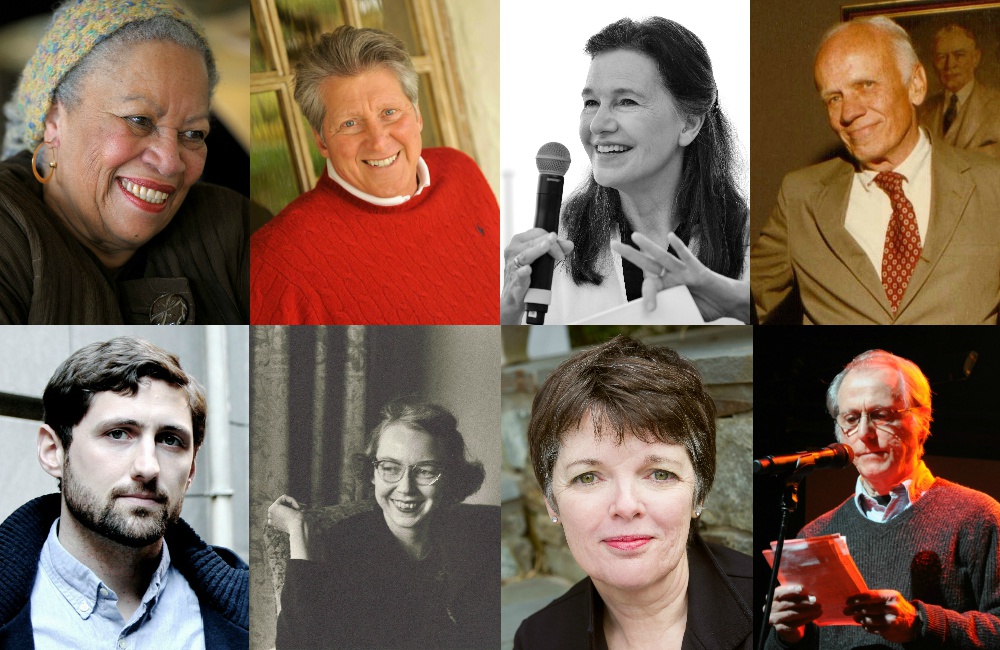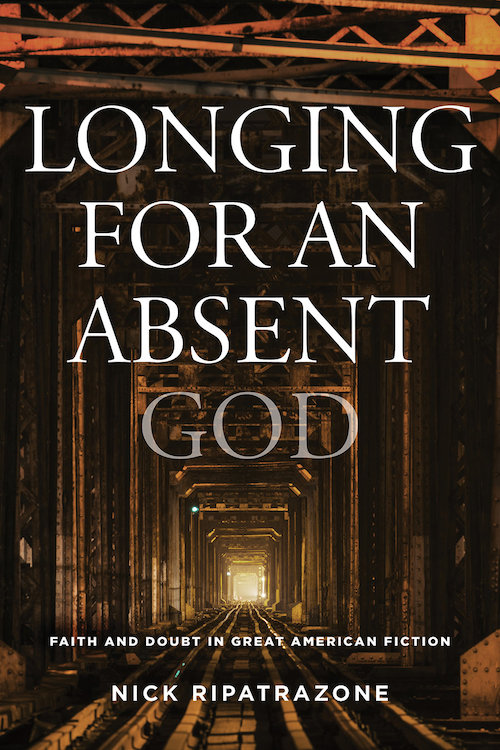
From left, top row: Toni Morrison (CNS/Reuters/Philippe Wojazer); Ron Hansen (Santa Clara University); Louise Erdrich (Wikimedia Commons/Alessio Jacona); Walker Percy (Wikimedia Commons/Aspen Institute Pictures). Bottom row: Phil Klay (CNS/Courtesy of Hannah Dunphy via Catholic Review); Flannery O'Connor (CNS/Courtesy of 11th Street Lot); Alice McDermott (CNS/Courtesy of Epic Photography/Jamie Schoenberger); Don DeLillo (Wikimedia Commons/Thousand Robots).

Much recent writing about the state of Catholic fiction that has garnered any attention — one thinks particularly of Dana Gioia and Paul Elie — is not optimistic about its future. In his new book, Nick Ripatrazone finds a way to challenge this gloomy assessment.
That he can do so is in part due to his willingness to include in the canon of contemporary Catholic fiction several novelists not usually labeled as Catholic writers: Don DeLillo, Thomas Pynchon, Cormac McCarthy, Toni Morrison and Louise Erdrich. It is to Ripatrazone's credit that he makes a good case for at least the vestiges of Catholic impulses or religious faith in their work.
The book is constructed with these five authors sandwiched between incontestably Catholic voices from an earlier generation — Graham Greene, Flannery O'Connor, Walker Percy and Andre Dubus — at the front end of the book, and two Catholics currently writing, Alice McDermott and Phil Klay, in the final chapter.
Ripatrazone's choices are his to make, but there are others who might be surprised to find themselves omitted. Why, for example, include the talented Klay, who is really only just starting to get serious attention and is the author so far of only one book, but make no mention of Mary Gordon, whose Catholic output is incontestably substantial? And why make a case for the earlier kind of Catholic fiction by turning to Greene, for whom faith and doubt were so finely balanced that he might belong in the middle section, and leave aside someone like J.D. Powers?
This kind of book, which seems to have brought together a number of chapters already published elsewhere, and perhaps some that are freshly written for this text, needs a thesis to hold it together. Ripatrazone offers such a key to the book's integrity in an introductory chapter subtitled, "Does Belief Matter in Fiction?" It is probable that the more accurate question for this book would be to reverse it and ask, "Does fiction offer a key to belief?"
Ripatrazone seems much more interested in calibrating the shifting sensibilities of post-conciliar Catholicism as illustrated in writers who grew up in the age before the 1962-65 Second Vatican Council (I except Erdrich and Klay), and whose faith journeys have taken them in many different directions, than he does in exploring the role of faith and doubt in the texts he considers.
In any case, the introduction compares Myles Connolly's Mr. Blue with Ron Hansen's Mariette in Ecstasy, not to make the obvious point that the latter is a far more significant text than the former. Instead, Ripatrazone offers them to illustrate "an evolution of Catholic storytelling, a more malleable understanding of values and ethics within a Catholic world view."
Earlier in the introduction, he compared DeLillo and Hansen and here the point is arguably accurate. Both are accomplished writers, he says, and both are marked in different ways by their Catholic sensibilities, but where Hansen's ongoing faith attends to God's presence, DeLillo and others like him "understand what it means to have God absent," so that their fiction might be "a statement of this longing for God, or at least a longing for that forgotten joy of belief."
Advertisement
Now, while this has the ring of truth, though one could imagine McCarthy or DeLillo disputing the imputation of frustrated religious longing, it is not so clear that it adds up to Ripatrazone's claim that his book "will show how the tension and interplay between lapsed and practicing American Catholic writers has formed and sustained a unique and significant literary aesthetic."
All that said, the interesting question that this book forces on our attention is whether and to what degree faith and or doubt has anything to say about the literary merits of this or that work of fiction.
Ripatrazone would undoubtedly agree that sincerity or integrity is an essential indicator of great literature. This is certainly the way he treats all the authors mentioned in the book. But if so, why on earth did he make such a questionable decision to label those who are no longer churched as "lapsed" Catholics? The very word "lapsed" implies a judgment on the person's integrity and fails to allow that everyone has a faith journey to follow, and that it may take this or that one in very specific directions and for very good reasons, away from their childhood religious identity. In fact, "lapsed" feels like a moral judgment or one that is a product of an ideologically conservative Catholic mindset, and if that is not what Ripatrazone intends, "lapsed" is a truly unfortunate category.
The author is at his best in the accounts he gives of individual texts, especially where the thesis disappears for a time. Some of his most captivating writing is devoted to Morrison and Pynchon, while his chapters on McCarthy and Erdrich leave us wanting to know more, or perhaps to have him concentrate on one work from each, rather than a more breathless attempt to cover several.
The final chapter, titled "Literary Faith in a Secular Age," clearly intends to complete the exposition of his thesis and to tie up loose ends. For this purpose, he chooses to concentrate on the work of McDermott and Klay. Both are highly talented Catholic writers, though there are issues with selecting Klay (see above).
The point we are being asked to accept is that McDermott and Klay, while remaining practicing Catholics, write differently than they otherwise would because of the work of those like DeLillo and Morrison. The trouble is, it just isn't clear.
If there is any common factor tying together the two groups Ripatrazone discusses, it is their literary self-identity in the light of the changed face of Catholicism after Vatican II. Klay, McDermott and Hansen are comfortable with a form of ambivalent yet faithful belonging. For the rest, for Ripatrazone's "lapsed" Catholics, the council either abandoned something essential to the tradition (Latin in the liturgy, for example) or capitulated to a softer version of Catholic belonging, instigating the multivalence that all these authors, practicing and lapsed alike, live comfortably within. But that one group led the other to this new world, that is simply not proven.
[Paul Lakeland is the Aloysius P. Kelley S.J. Professor of Catholic Studies and director of the Center for Catholic Studies at Fairfield University. He is author of The Wounded Angel: Fiction and the Religious Imagination.]
Editor's note: Love books? Sign up for NCR's Book Club list and we'll email you new book reviews every week.





